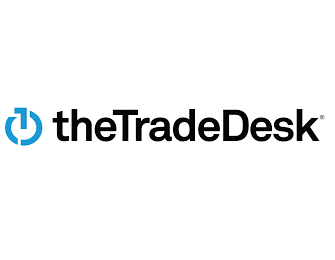The Trade Desk Inc-A (TTD.US) 2025第二季度业绩电话会
文章语言:
简
繁
EN
Share
Minutes
原文
会议摘要
The Trade Desk's Q2 2025 revenue surged 19% to $694 million, propelled by AI advancements and open internet strategies. Key innovations like Coca and Deal Desk, alongside CTV and retail media focus, expanded market share from walled gardens. The company anticipates Q3 revenue of at least $717 million, reflecting 14% growth, and remains confident in capturing a significant portion of the expanding digital advertising market.
会议速览
In the second quarter financial report of 2025, the company reported a 19% year-on-year revenue growth, surpassing the digital advertising market. The CTV channel performed well, deepening relationships with partners like Disney and NBCU. The company emphasized innovation and customer value, signing more JVPSs and strengthening cooperation with brands and agencies. Looking ahead, the company believes it is in a favorable position in the advertising technology field and will accelerate growth in 2026.
The significant effects brought by the Cokii platform upgrade were introduced, including the greatly improved advertising effectiveness of clients such as Samsung and Cash rewards in different regions, with an overall KPI improvement exceeding 20 points. Clients using Cokii saw a total spending growth rate on Trade Desk that is over 20% faster than those who do not use it. It is expected that all clients will use Cokii within the year, demonstrating the potential and platform value of open internet advertising.
The dialogue emphasized that through open pathways, Sincera data integration, and innovative technologies such as Deal Desk, the efficiency and transparency of the digital advertising supply chain have been significantly improved. Open pathways allow publishers to directly connect with ad buyers, increasing advertising revenue; Sincera data helps optimize ad quality assessment; Deal Desk uses AI technology to improve ad transactions, helping publishers such as Disney achieve programmatic growth goals in advertising revenue.
The dialogue emphasized the importance of advancing objectivity in the field of advertising technology, especially in light of the tendency for large tech companies to favor their own media channels. Through case studies such as precise ad targeting during live sports events and retail data analysis, it demonstrated how to utilize open internet resources to achieve efficient and fair advertising placements. It also highlighted collaboration with multiple industry leaders to drive innovation and application of advertising technology.
The conversation emphasized the importance of strengthening the leadership team and optimizing the operational structure to achieve the success of the company. This includes the addition of a new CFO, transitional plans for the existing leadership team, and strengthening of the board of directors. Additionally, improvements in the market organization structure were mentioned to ensure that customers can fully utilize the company's platform. Finally, the company's mission, vision, and industry partnership opportunities were reiterated, demonstrating an optimistic outlook for the future.
The global advertising industry is facing a huge opportunity brought by AI, with quality data and objectivity becoming key. This vision emphasizes working with hundreds of retailers through independent and transparent measurement methods, dedicated to objectively purchasing advertising across the entire open internet, breaking traditional barriers and ensuring maximization of buyer's interests. The plan is to revolutionize the media and data supply chain, promoting the industry towards a more fair and transparent direction.
Discussed the application of AI in the field of advertising and media buying, such as predicting advertising effectiveness, optimizing the supply chain, emphasizing the importance of building trust in the buyer's market, aiming to transform the open internet into the main platform for efficient advertising placement, blurring the boundaries between brand and performance advertising, and driving all advertising effects to be quantifiable and aimed at results.
Discussed the importance of maintaining a dual-class share structure to sustain the long-term development strategy of the company, emphasizing that since its establishment, the company has achieved significant growth through innovation and execution, particularly in the advertising market share. Faced with a rapidly changing digital advertising environment, including regulatory pressures, the rise of AI, and the demand for transparency, the company firmly believes that a long-term vision is key. By continuously optimizing its platform and partnerships, the company is confident in leading the development of the open internet in the next decade and achieving growth beyond the market.
After joining the company in 2014, the speaker witnessed the journey from a startup to becoming a member of the S&P 500, and is confident in the company's future. At the leadership transition, the speaker expressed trust and support for the new CFO, emphasizing the stability and vitality of the finance team to ensure a smooth transition.
The company's second-quarter revenue reached $69.4 billion, a year-on-year increase of 19%. Excluding political advertising related to the US election, the revenue increased by about 20%. CTV and retail media were the main drivers of growth, with the North American market accounting for 86% of revenue and international growth accelerating. It is expected that revenue in the third quarter will be at least $71.7 billion, a year-on-year increase of 14%, with adjusted EBITDA of approximately $27.7 billion. The company's cash flow is strong, and it continues to buy back stocks, maintaining an optimistic outlook on future markets.
Facing the evolution of the digital advertising environment, the spokesperson expressed confidence in the future, emphasizing the opportunities brought by uncertainty, the measurability and transparency of programmatic advertising, the emphasis of advertisers on performance, the advantageous situation of supply and demand imbalance, the combination of unique data assets and AI advantages, as well as the potential of high-quality open internet advertising, believing that these factors together constitute a strong driving force for industry development.
Trade desk emphasizes its huge potential in the open internet field, pointing out that compared to Facebook, its Total Addressable Market (TAM) is larger, and there is a broader unrealized value space. The company is accelerating its pace of innovation, optimizing product and engineering collaboration, and improving product development speed. It shows strong growth momentum in CTV advertising, retail media, and joint business plans, with strengthened internal operations and marketing strategies. In the face of Google and Facebook's neglect of the open internet, Trade desk is filling the market gap and becoming an important partner for large publishers. Looking ahead, Trade desk is confident about the prospects for 2026, expecting all customers to use its new platform by the end of the year and continue to expand market share.
The technical difficulties mentioned in the conversation hindered a participant from joining the call, leading to inability to connect properly. The organizers of the meeting promptly took action, attempting to switch to the next participant to ensure continuity of the meeting.
The conversation delved into Amazon's strategic adjustments in the advertising field and its impact on the market competition landscape. It pointed out that although Amazon's expansion in areas such as Prime Video has increased its advertising inventory, its inherent bias makes it difficult to objectively purchase open internet advertisements, thus limiting trust among large-scale advertisers. It emphasized that independent DSP platforms like The Trade Desk, with their advantages of no conflicts and no compromises, are attracting more and more brand clients. At the same time, it discussed the competitive relationship between Amazon and advertising clients in multiple industry sectors, as well as the challenges the two sides face in terms of data trust. Finally, it expressed an optimistic attitude towards the future development of the open internet advertising market, and suggested potential collaboration possibilities with Amazon in areas like Prime Video.
The impact of tariff policies on global major brand advertising spending was discussed. It was pointed out that this uncertainty intensified at the beginning of the year, but has since stabilized. Despite the direct impact of tariffs on large advertisers, companies are facing short-term negative effects due to their focus on servicing large global advertisers. However, in a volatile environment, programmatic advertising has become advantageous due to its control, flexibility, and measurability, accelerating the shift towards programmatic advertising. Additionally, an increase in the number of joint commercial initiatives with major advertisers, as well as a preference for flexible commitments in CTV presales, further enhances the company's market position, making them confident for the second half of the year and beyond.
Discussed the latest progress of the Coca platform, emphasizing the application and effectiveness of AI technology in the field of advertising technology, including product iteration, engineering improvements, and ROI enhancement, demonstrating the profound impact of AI on the future development of advertising technology.
The dialogue discussed the innovative applications of AI in the advertising field, especially the trend of comprehensive adoption of the COCO platform, and the potential of Deal Desk in optimizing advertising transactions. AI systems have improved advertising effectiveness, accelerated business development, attracted large clients including Disney, and demonstrated the prospects of the advertising industry moving towards more efficient and real-time optimization.
Discussed the role of AI in advertising optimization, pointing out that a 20% improvement potential may just be the beginning, with the specific speed of improvement depending on the degree of optimization of the advertising settings. At the same time, analyzed the reasons for the lower than average levels in the home gardening and fashion style categories, attributing them respectively to seasonal factors and natural fluctuations.
Discussed the differences in consumer time and purchasing power between open internet and closed gardens (such as Meta, Amazon, Google, etc.), emphasizing the advantages of open internet in brand relevance. Predicted that in the coming years, with the slowing growth of CTV and retail media, open internet is expected to gain more market share from closed gardens, especially in high-end television, music, film, and news sectors.
Discussed the advantages of utilizing AI to optimize its ecosystem in the short term, as well as the long-term challenges and opportunities of building an efficient supply chain on the open internet. Emphasized the importance of AI in driving market changes, pointing out that although closed platforms may perform well in the short term, long-term trends indicate that the open internet will attract more consumer time and brand investments, thus bringing greater market potential.
Discussed how the company plans to establish trust with enterprise-level clients using AI technology, and gradually expand to medium and small markets. Emphasized the importance of experience in serving large clients for serving small and medium-sized enterprises, and highlighted that the key to future market growth lies in the continued support and expansion of current large clients.
要点回答
Q:What is the significance of The Trade Desk's leadership in CTV according to the CEO?
A:The Trade Desk's leadership in CTV and other areas such as retail media, digital audio, identity measurement, and data is significant because it enables the company to win more business with both new and existing customers, and it is resulting in strong partnerships with agencies and brands.
Q:What are the performance improvements that clients have seen with the adoption of Coca?
A:Clients that have adopted Coca have seen tremendous performance improvements, with examples including a 43% improvement in reaching target audiences for an omnichannel campaign in Europe, a 73% improvement in cost per acquisition for campaigns in Asia, and more than a 20 point improvement across key KPIs for campaigns running in Coca.
Q:What is the expected adoption rate of Coca among The Trade Desk's clients?
A:Around three quarters of all clients are now running their spend through Coca, and it is expected that all clients will be using Coca by the end of the year.
Q:What is the impact of Open Path on publishers and how does it differ from The Trade Desk's supply side involvement?
A:Open Path has a positive impact on publishers, as it provides clarity and confidence to clients, leading to more buying. The Trade Desk is not entering the supply side of digital advertising or the yield management business; Open Path is an effort to improve the quality of the supply chain for everyone in the ecosystem.
Q:What is Deal Desk and what is its purpose in the context of the advertising supply chain?
A:Deal Desk is a major final piece of Coca currently in beta, which uses AI, especially AI forecasting, to reshape how deals are managed between advertisers and publishers and intermediaries like SSPs. It helps understand deal performance, pacing, and whether the right impressions are being delivered, and when underperformance is identified, it can help get deals back on track and showcase alternatives.
Q:How does The Trade Desk's innovation assist Disney with their advertising strategy?
A:The Trade Desk's innovation, specifically with Deal Desk, helps Disney shift ad revenue to programmatic by showcasing open market and premium internet alternatives. Disney aims to achieve their goal of shifting 75% of their ad revenue to bid or programmatic by 2027 through this partnership.
Q:What is The Trade Desk's approach to advancing objectivity across the ad tech ecosystem?
A:The Trade Desk is focused on advancing objectivity in everything they do and across the ad tech ecosystem. They recognize the importance of objectivity and the power of the premium open internet for clients to reach their target audience precisely and cost efficiently, with no vested interest in driving spend to owned media like some big tech platforms.
Q:What are the perceived benefits of live sports in a streaming TV environment for advertisers?
A:Live sports in a streaming TV environment offer advertisers the ability to target key moments, such as overtime in an NBA game or the end of a soccer game, when the audience is most engaged. This precision allows advertisers to reach their most engaged audience.
Q:How can advertisers measure the business outcomes of their marketing campaigns?
A:Advertisers can measure the business outcomes of their marketing campaigns with precision by leveraging Coca's retail media marketplace and expanded partnerships with leaders like Instacart and Ocado, which provide granular data on actual consumer purchases.
Q:Who is joining the company as CFO, and what is his background?
A:Alex Heel is joining the company as the new CFO, with a decade-long relationship with the company starting as an early investor in 2014. He has over two decades of experience in the digital space and is known for his strategic mindset in finance.
Q:What is the significance of operational rigor in the company's success?
A:Operational rigor underpins the company's success, which includes the strengthening of its leadership team, enhancing the board of directors, and improving the structure and clarity of its go-to-market organization.
Q:What is the company's vision concerning AI and the open internet?
A:The company's vision is to define the category of a DSP as not being at the core of their value proposition but to focus on providing access to inventory, database decisioning, and measurement for quality AI-driven buying. They aim to buy the entire open internet objectively for both large and small buyers.
Q:What is the company's mission, and what is the collective opportunity in the global advertising industry?
A:The company's mission is to buy the entire open internet objectively for buyers of all sizes, and the collective opportunity in the global advertising industry is to capture a larger share of the trillion-dollar industry by aligning interests with buyers and improving the efficacy and outcomes of digital advertising spend.
Q:How does the company view its role in the open internet advertising supply chain?
A:The company aims to change the open internet advertising supply chains for both media and data by partnering with hundreds of retailers worldwide to measure performance in an objective way, ensuring that the open internet gets the first dollar of budget.
Q:What is the company's approach to using AI in its products?
A:The company's approach to using AI in its products includes leveraging it for forecasting, which predicts the reach and performance of a campaign before any spend is made. AI is also used to improve performance by being always on and performing tasks like determining impression value and supply chain optimization.
Q:Why does the company propose extending its dual-class share structure?
A:The company proposes extending its dual-class share structure to maintain the long-term vision and orientation that has been key to its success. This structure has allowed the company to make decisions that focus on the open internet's future rather than short-term pressures, and it aims to continue leading the space for years to come.
Q:What are the key factors that set the Trade Desk apart from its competitors?
A:The Trade Desk sets itself apart from competitors through alignment with advertisers, focus on innovation, commitment to transparency and objectivity, and upgrades across the company, platform, and partnerships.
Q:What accomplishments has Laura experienced since joining the Trade Desk in 2014?
A:Laura has been with the Trade Desk since 2014, has been part of the leadership team through significant milestones, including going public and joining the S&P 500, and has valued the relationships with the investment community.
Q:What were the financial results of the Trade Desk in the second quarter?
A:The Trade Desk had a strong second quarter with revenue of $694 million, representing 19% year-over-year growth, and adjusted EBITDA of approximately $271 million or about 39% of revenue.
Q:How is the Trade Desk responding to the challenges faced by large brands in the digital ad environment?
A:The Trade Desk is responding to these challenges by capitalizing on uncertainty as an opportunity, providing measurable, agile, transparent, and result-driven programmatic advertising, catering to more performance-driven and deliberate advertisers, and taking advantage of a supply-demand imbalance that favors them.
Q:How is the Trade Desk positioned to gain market share?
A:The Trade Desk is well-positioned to gain market share due to the underappreciated data asset and the quality data feeding an AI engine that aids in sorting out the complex supply chain for major buyers, leading to a big opportunity for the open internet and large brands.
Q:What opportunities does the Trade Desk see in the CTV and retail media sectors?
A:The Trade Desk sees great momentum in CTV and significant traction in retail media, with more joint business plans under negotiation than ever before and spend within those plans growing faster than overall platform spend.
Q:How is the competitive landscape evolving with Amazon's advertising efforts?
A:The competitive landscape is evolving as there is growing investor and media focus on Amazon's advertising efforts, particularly with Demand Side Platforms (DSP) and Prime Video ad inventory. The speaker does not believe that Amazon or Google are competitors in buying across the open internet in an objective way due to their bias and the large amount of proprietary inventory they have, like Prime Video. Instead, they suggest that a scaled independent DSP like the Trade Desk is essential for advertisers to buy across everything without conflict or compromise.
Q:What are the speaker's views on Amazon's competitive stance in the market?
A:The speaker views Amazon not as a true competitor but more of a potential partner, especially since Amazon competes with many of the world's biggest advertisers in sectors like retail, CPG, and cloud. They believe that if Amazon opens Prime Video to external demand, they could be an amazing partner to drive demand to them. The speaker also notes that while they watch Amazon closely, they operate in a different 'sandbox' focusing on decision media, precision, identity, and outcomes.
Q:How is the uncertainty due to tariffs affecting ad spend and the speaker's Q3 guidance?
A:The uncertainty due to tariffs and related policies is creating pressures on companies, leading to ad spend volatility. This is particularly affecting large global advertisers which makes up the majority of the speaker's business. Q4 was relatively stable, but Q1 saw growing concerns and volatility, especially in sectors like auto and CPG. Since then, conditions have stabilized, but the impact of tariffs is very real and has led to a short-term negative impact on these businesses. Despite the macro pressures and the challenging environment, the speaker is confident in their position heading into the second half of the year, attributing this to their focus on programmatic and large global advertisers.
Q:What is the significance of programmatic advertising in volatile environments?
A:In volatile environments, programmatic advertising is significant because it provides control, agility, and performance, leading to more deliberate and performance-driven advertising strategies. The speaker believes that during volatile times, programmatic's measurability and performance capabilities make it a preferred choice for advertisers, leading to a win share and tailwinds in the marketplace.
Q:How is the implementation of AI across the platform affecting results?
A:The implementation of AI across the platform has led to amazing progress and rapid client feedback iterations, resulting in the platform, named Coca, becoming the best ad tech platform for the open internet. AI has been integrated into several areas of the platform, including forecasting, campaign optimization, supply path optimization, and predictive clearing, with already noticeable performance improvements for clients who have adopted it.
Q:What are the performance gains reported for campaigns running in Coca?
A:Cocaine campaigns are outperforming legacy ones by more than 20 points on KPIs, and clients who have shifted the majority of their spend to Coca are increasing their total spend on the platform more than 20% faster than those who haven't.
Q:How is AI being innovated and utilized within the company?
A:The company has developed a system of distributed AI that comes with checks and balances, allowing innovation to happen in parallel from multiple teams, and is building toward an even more AI-driven world where intelligent agents can monitor, adjust, and optimize campaigns in real-time.
Q:What is Deal Desk and which company is mentioned as an early adopter?
A:Deal Desk is one of the final pieces of Coca, currently in beta, that uses AI in forecasting to rethink how deals between advertisers, publishers, and intermediaries could work. It evaluates pacing, delivery performance, and can rescue underperforming deals. Disney is mentioned as an early adopter of this technology.
Q:What improvements have been seen in campaigns using AI?
A:There has been a 20% improvement across key performance indicators (KPIs) for campaigns running in Coca. This represents the current pace of innovation and improvement, which is expected to continue as AI technology and campaign optimizations evolve.
Q:Why might the home and garden and style and fashion segments be underperforming?
A:The home and garden segment is mentioned as being around 8% of the business and is seasonally lower, while the style and fashion segment, at about half the size of the home and garden segment, is also noted as underperforming. These segments account for a portion of the revenue and may not meet expectations due to their seasonal nature and relative size.
Q:How does the company envision the shift in market share between the open internet and walled gardens?
A:The company anticipates that over time, the majority of spend will be on the open internet rather than inside walled gardens. This is due to the better performance of the premium open internet for major brands, the complexity and work required to create an efficient supply chain for the open internet, and the difficulty in self-measuring success which makes it advantageous to rely on independent metrics.
Q:What is the company's strategy regarding market focus and client size?
A:The company's strategy has been to start with the largest advertisers and win their trust, believing that it would make it easier to do so with midsize and smaller businesses. They recognize the differences between serving large, midsize, and small businesses and have ambitions to service smaller businesses but are not focusing on them right now. The company aims to continue supporting and growing their current client base, especially as it relates to the large and midsize advertisers which have historically significant representation in CTV and are expected to continue doing so in the future.

The Trade Desk Inc
Follow





